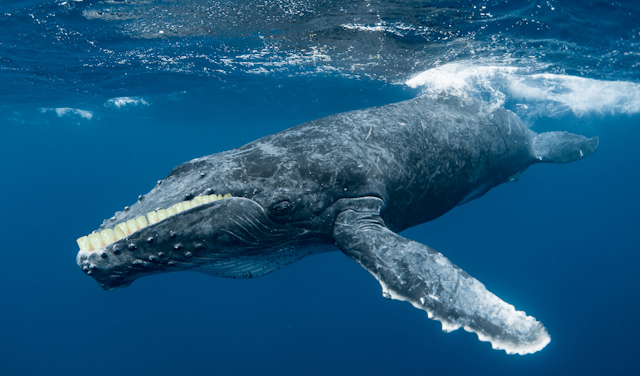Why don’t whales have teeth like we do? asked by Henry, 6 years old.
Great question, Henry. Your teeth are an important part of your body. They help you chew your food so you can eat and grow strong. But if you ever thought about inviting a whale for dinner, think again!
It’s true, some whales are toothless – but not all of them. Did you know the world’s biggest animal, the blue whale, doesn’t have any teeth at all? Whales with no teeth are called baleen whales. Along with blue whales, these also include humpback whales, right whales and more.
Some other types of whales do have teeth. These include sperm whales, beluga whales, and narwhals (which are like chunky unicorns of the sea).
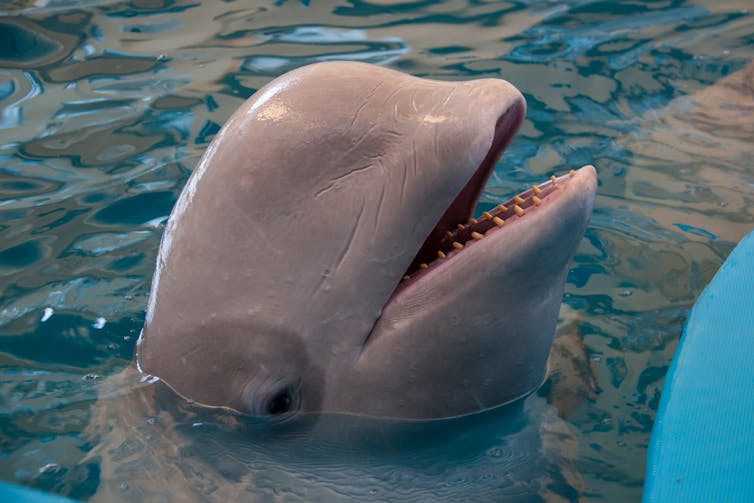
So why don’t baleen whales have teeth?
It’s all based on their diet and how they capture their food. Unlike you and me, whales don’t eat veggies, which need lots of chewing. Their diet is mainly made up of small fish, prawn-like creatures called krill, and tiny creatures called plankton.

Krill are only a few centimetres in size, and can be found in large swarms in the ocean. A blue whale can eat up to 6,000 kilograms, or a bus-load, of krill a day.
Luckily, most baleen whales have very wide mouths – as wide as a car. The best way to eat these tiny animals all at once is to scoop them up in one giant mouthful. Yum!
Baleen whales open their mouths really wide and expand their throats, which have grooves all the way down to their stomachs.
This lets the whale make their mouth super big, like an expanding slinky, and scoop up lots of krill and seawater at the same time. In fact, some whale mouths are so big an elephant could fit inside!
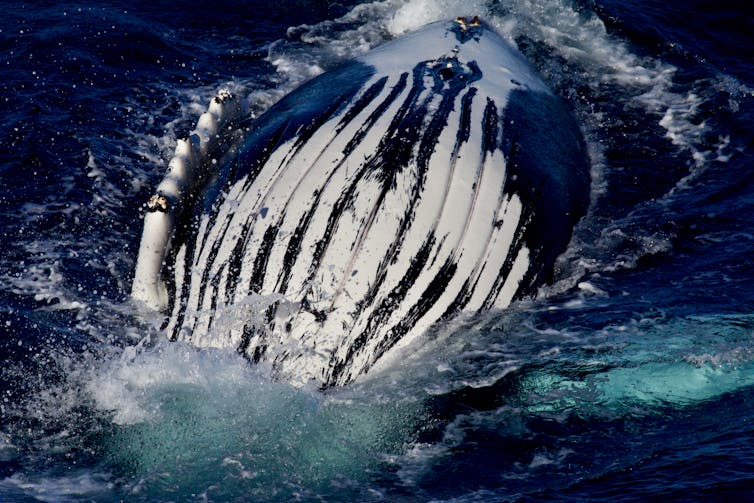
But what happens to all that water?
Baleen whales all have long strands hanging from the top of their mouth – imagine lots of straw broom bristles. These strands are made of the same material as your nails and hair, called keratin.
The whale uses these bristles to trap the krill in their mouths, and push sea water out. This is like a sieve separating spaghetti from pasta water.
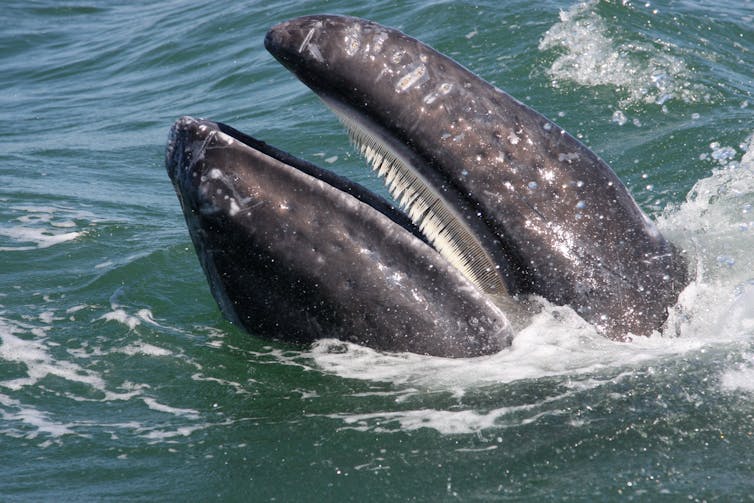
Some whales, like the humpback whale, are clever hunters, and may blow bubbles from their nose to create nets around their food.
These bubbles pack fish into one area, letting the whale scoop them all up in one mouthful.
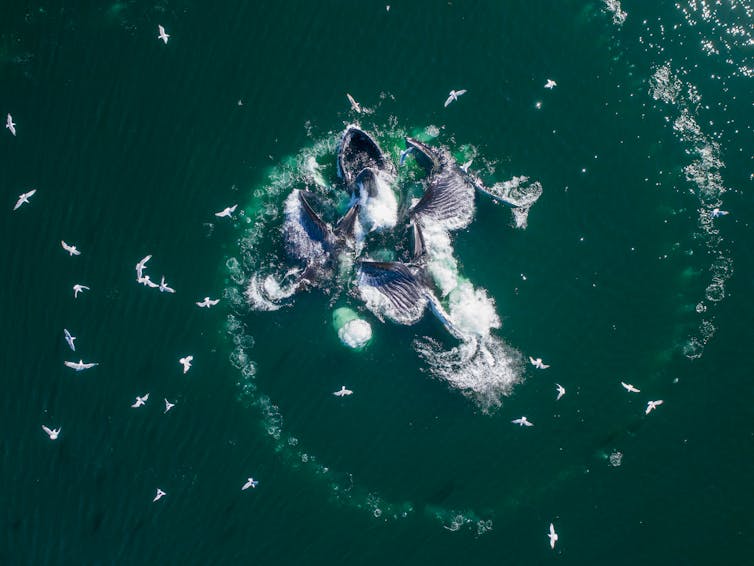
So, what would happen if a baleen whale came to dinner?
Well, first of all, the whale wouldn’t fit in the kitchen, so dinner would have to be outside.
Mum or dad would need lots of krill and fish. Forget about knives, forks or any table manners, tonight you’ll be eating with your mouth only.
But here’s the crazy part. Once dinner is served, your whale friend would open its mouth and expand its throat. This would be so wide, it would probably cover the entire kitchen table, including you and your family.
Talk about a very impolite, smelly and blubbery dinner guest!

